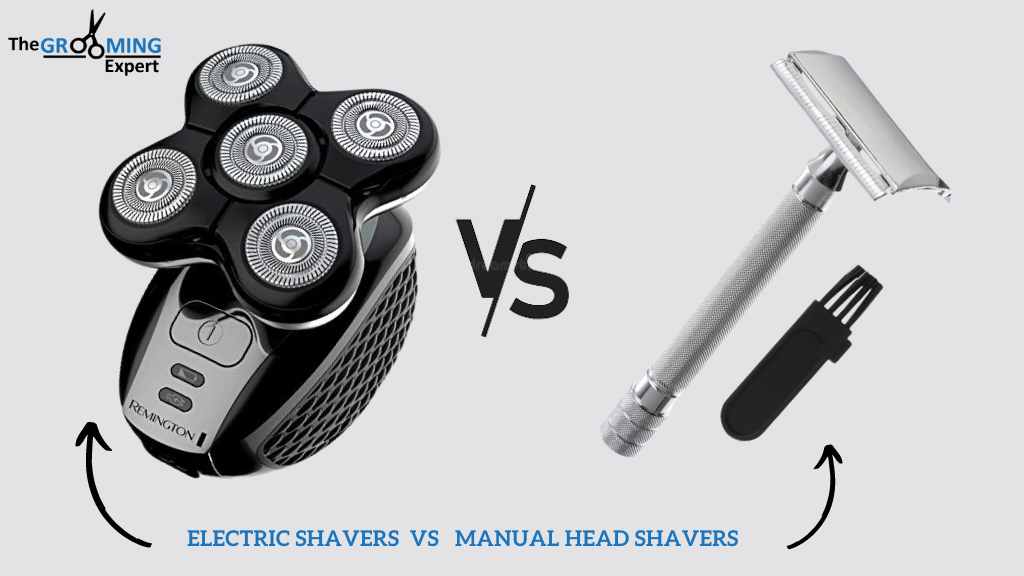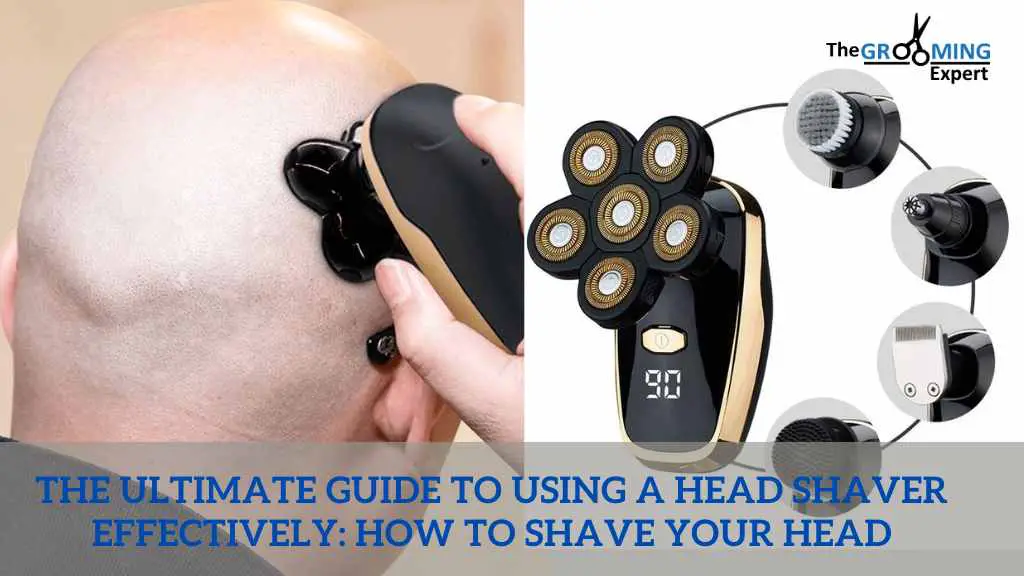In recent years, head shaving has emerged as a popular grooming trend among men, transcending cultural and fashion boundaries. Whether it’s for practical reasons like managing baldness or for personal style, using a head shaver effectively requires a blend of technique, product knowledge, and care. In this comprehensive guide, we delve into the art and science of How To Shave Your Head Using a Head Shaver, providing you with all the essential information to achieve a smooth and satisfying shave every time.
Head shaving has gained traction not only as a solution to baldness but also as a fashion statement and an expression of personal style. The trend has become increasingly mainstream with celebrities and athletes often flaunting a clean-shaven scalp.
Benefits of Using a Head Shaver
The benefits of head shaving extend beyond aesthetics. It offers convenience, confidence, and a sense of control over one’s appearance. Additionally, a well-executed head shave can exude professionalism and sophistication.
Choosing the Right Head Shaver
Selecting the appropriate head shaver is crucial for achieving optimal results. Understanding the differences between electric and manual shavers and identifying key features can significantly enhance the shaving experience.
Electric vs. Manual Head Shavers

Electric shavers provide convenience and speed, making them ideal for quick touch-ups. On the other hand, manual shavers offer precision and control, allowing for a closer shave. Choosing between the two depends on individual preferences and lifestyle.
Key Features to Look for in a Head Shaver
When purchasing a head shaver, consider factors such as blade quality, ergonomic design, and battery life. Investing in a high-quality shaver with durable blades, a comfortable grip, and a long-lasting battery ensures a smooth and efficient shaving experience.
Preparing Your Scalp for Shaving
Proper preparation is essential for a successful head shave. These pre-shaving steps lay the foundation for a seamless grooming routine from exfoliating the scalp to softening the hair.
Importance of Scalp Exfoliation
Exfoliating the scalp removes dead skin cells and prevents ingrown hairs, promoting a smoother shave and reducing the risk of irritation.
Softening the Hair Before Shaving
Softening the hair with warm water or pre-shave oils helps to open the pores and soften the hair follicles, allowing for a closer and more comfortable shave.
Selecting the Right Shaving Products
Choosing suitable shaving products, such as shaving creams or gels specifically designed for sensitive skin, enhances lubrication and minimizes friction, resulting in a gentler shave.
The Art of Head Shaving
Mastering the art of head shaving involves adopting the right techniques and strategies to achieve a flawless finish.
Step-by-Step Guide to Using a Head Shaver
Shaving your head using a head shaver is a straightforward process, but it’s important to take your time and follow some steps to ensure a smooth and comfortable shave. Here’s a step-by-step guide:
Preparation
- Start by gathering all the necessary tools: a head shaver (electric or manual), a mirror (preferably a large one or a handheld mirror), shaving gel or cream, a clean towel, and aftershave lotion.
- If your hair is long, it’s a good idea to trim it with hair clippers first to make the shaving process.
Trimming
- If you haven’t already trimmed your hair, use hair clippers with the desired guard length to cut it down to a short length.
- This step helps prevent the head shaver from getting clogged with long hair and makes the shaving process smoother.
Shower or Wash Your Head
- Before shaving, it’s best to shower or wash your head with warm water and a gentle cleanser.
- This helps soften the hair and open up the pores, making it easier to shave and reducing the risk of irritation.
Apply Shaving Gel or Cream
- Apply a generous amount of shaving gel or cream to your entire head.
- Make sure to massage it thoroughly to create a protective barrier between the shaver and your skin.
Start Shaving
- Turn on your head shaver and begin shaving, starting from the front or sides and working your way toward the back.
- Use gentle, smooth strokes, moving the shaver against the direction of hair growth for a closer shave.
- Keep the shaver clean by regularly rinsing it under running water to remove hair and gel buildup.
Check Your Progress
- Periodically check your progress in the mirror to ensure you’re shaving evenly and not missing any spots.
- If necessary, go over any areas you may have missed or where the shave isn’t as close as you’d like.
Rinse and Pat Dry
- Once you’ve finished shaving, rinse your head with cool water to remove any remaining shaving gel or cream.
- Pat your head dry with a clean towel, avoiding rubbing, which can irritate the skin.
Apply Aftershave Lotion
- Apply a soothing aftershave lotion or balm to your freshly shaved head to hydrate the skin and prevent irritation.
- Look for products that are alcohol-free and specifically formulated for sensitive skin.
Clean and Maintain Your Shaver
- After shaving, clean your head shaver according to the manufacturer’s instructions to prolong its lifespan and ensure optimal performance for future shaves.
Moisturize Daily
- Keep your scalp moisturized daily to prevent dryness and maintain smooth skin.
- Consider using a moisturizer or lotion specifically designed for the scalp.
Following these steps should help you achieve a smooth and comfortable head shave using a head shaver. Remember to take your time, especially if you’re new to shaving your head, and be gentle to avoid irritation or nicks.
Tips for Regular Head Shaver Maintenance
Clean and lubricate the shaver regularly to prolong its lifespan and ensure optimal performance.
Common Mistakes and How to Avoid Them
Avoid these common pitfalls to achieve a flawless head shave:
Over-Shaving and Its Effects
Excessive shaving can irritate the skin and increase the risk of razor burn or ingrown hairs. Shave only when necessary and allow the skin to rest between sessions.
Ignoring Scalp Health
Neglecting scalp health can lead to dryness, flakiness, and other dermatological issues. Maintain a balanced diet, stay hydrated, and use gentle skincare products to keep your scalp healthy.
Advanced Tips for Experienced Users
For those well-versed in head shaving, experiment with creative styles, patterns, and combinations with facial hair to elevate your grooming routine.
Creative Styles and Patterns
Explore different styling options from intricate designs to classic fades to showcase your personality and creativity.
Combining Head Shaving with Facial Hair Styles
Coordinate your head shave with your facial hair style for a cohesive and polished look.
How to Use a Head Shaver Effectively
Maximize the efficiency of your head shaver by personalizing your shaving routine and incorporating advanced techniques.
Maximizing the Efficiency of Your Head Shaver
Experiment with shaving angles, pressure, and direction to achieve optimal results with minimal effort.
Personalizing Your Head Shaving Routine
Tailor your shaving routine to suit your skin type, hair texture, and preferences for a customized grooming experience.
FAQs on Using a Head Shaver
How often should I replace my head shaver blades?
The frequency of blade replacement depends on factors such as usage frequency and the quality of the blades. As a general guideline, consider replacing the blades every six months to a year for optimal performance and a consistently smooth shave.
Can head shaving cause skin irritation or bumps?
While head shaving can cause skin irritation or bumps, proper technique, and skincare can help minimize these issues. Ensure your scalp is properly moisturized and exfoliated before shaving, use a sharp and clean blade, and shave in the direction of hair growth to reduce the risk of irritation and bumps.
What is the best way to treat cuts from shaving?
If you experience cuts or nicks while shaving your head, rinse the area with cold water to clean it and stop the bleeding. Apply a styptic pencil or alum block to help seal the cut and reduce bleeding. Follow up with an alcohol-free aftershave or moisturizer to soothe the skin and prevent infection.
How can I achieve a bald look without razor burn?
To achieve a bald look without razor burn, it’s essential to prepare your scalp properly before shaving. Soften the hair with warm water or a pre-shave oil, use a high-quality shaving cream or gel for lubrication, and shave with gentle strokes in the direction of hair growth. Additionally, ensure your razor blade is sharp and clean to minimize friction and irritation.
Is it better to shave my head wet or dry?
While some people prefer shaving their head wet for added lubrication and comfort, others find success with dry shaving. Ultimately, the choice between wet and dry shaving comes down to personal preference and skin sensitivity. Experiment with both methods to determine which works best for you.
What are the best products to use for head shaving?
The best products for head shaving include a high-quality razor or electric shaver, shaving cream or gel, aftershave balm or lotion, and a moisturizer suitable for your skin type. Look for products specifically designed for sensitive skin and formulated to provide hydration and protection against irritation. Experiment with different brands and formulations to find the ones that suit your needs best.
Conclusion
With the right tools, techniques, and care, mastering the art of head shaving is attainable for anyone. By following this comprehensive guide, you can achieve a smooth, satisfying shave and exude confidence in your appearance. Embrace the versatility and convenience of head shaving as you embark on your grooming journey, and enjoy the transformative power of a clean-shaven scalp.

Meet Irwin Jolly, the grooming expert passionate about men’s grooming products. Irwin has been in the industry for years, and he’s tried and tested hundreds of grooming products to help men achieve their desired looks. Regarding grooming, skincare, and hair styling, Irwin knows what works and what doesn’t. His reviews are honest and thorough, and he doesn’t promote anything he hasn’t tried and tested. He believes grooming is essential to self-care, and he’s dedicated to helping men look and feel their best.


